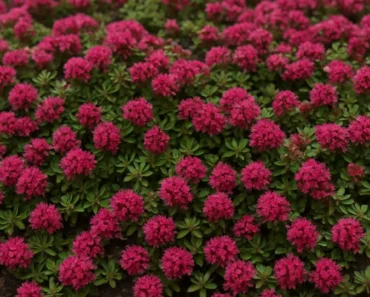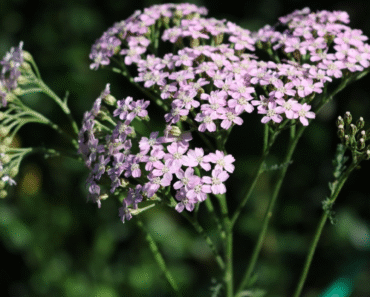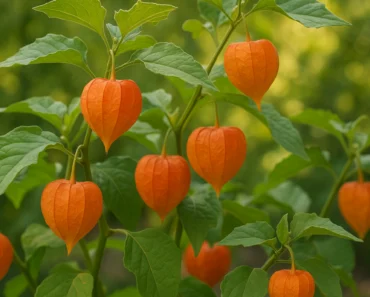
Butterfly Weed (Asclepias tuberosa) is a vibrant, low-maintenance perennial known for its striking orange flowers and its role in supporting pollinators, particularly monarch butterflies. This plant thrives in full sun, attracts beneficial insects, and adds a splash of color to gardens. In this guide, we’ll explore the benefits, growing conditions, and care tips for butterfly weed, helping you incorporate this beautiful plant into your garden.
Table of Contents
What Is Butterfly Weed?
Butterfly Weed is a species of Asclepias, also known as Milkweed. It is native to North America and is prized for its ability to attract pollinators such as monarch butterflies, bees, and hummingbirds. Asclepias tuberosa is distinct from other milkweed species due to its bright orange flowers and its preference for well-drained soil in sunny locations. It’s a perennial that forms attractive clumps of foliage and offers a unique aesthetic to gardens, especially in butterfly gardens.
- Scientific Classification:
- Genus: Asclepias
- Species: tuberosa
- Family: Apocynaceae (The Milkweed Family)
- Native Habitat: North America, particularly in dry, open fields, prairies, and meadows.
- Flowering Season: Late spring to summer, providing a vibrant burst of color.
For more details on growing butterfly weed, check out Gardenia’s detailed guide on Asclepias tuberosa.
Growing Conditions for Butterfly Weed
To successfully grow butterfly weed, it’s important to understand its preferred growing conditions. This plant thrives in well-drained soil and enjoys a sunny spot, making it perfect for gardens that receive plenty of sunlight.
- Light Requirements:
- Full Sun: Butterfly weed thrives with at least 6 hours of direct sunlight per day. It can tolerate some light shade, but it produces the best flowers and growth in full sun.
- Soil Preferences:
- Well-drained soil: Butterfly weed prefers sandy, loamy, or gravelly soil that drains well. It doesn’t like its roots to sit in water, which can lead to root rot.
- pH: Slightly acidic to neutral soil (pH 6.0–7.0) is ideal for this plant. Adding organic matter can help improve soil quality.
- Watering Needs:
- Moderate Watering: Butterfly weed is drought-tolerant once established but needs regular watering during dry spells. Ensure the soil is moist but not soggy.
For more about the best growing conditions, visit The Spruce’s guide on how to grow butterfly weed.
Butterfly Weed Care and Maintenance
Once established, butterfly weed is relatively low-maintenance. However, following some basic care steps will ensure it thrives and continues to attract pollinators.
- Planting:
- Timing: Plant butterfly weed in the spring or fall, avoiding the hottest summer months.
- Spacing: Space plants 12–18 inches apart to give them room to grow and spread.
- Depth: Plant butterfly weed at the same depth as it was in the nursery pot.
- Mulching:
- Mulching helps retain moisture, suppresses weeds, and keeps the roots cool in the summer. Use an organic mulch like bark or compost.
- Fertilization:
- Minimal Feeding: Butterfly weed doesn’t require heavy fertilization. If necessary, apply a balanced, slow-release fertilizer in the early spring.
- Pruning and Deadheading:
- Deadheading: Remove spent flowers to encourage more blooms and maintain a tidy appearance.
- Pruning: After flowering, cut back the plant to promote new growth and prevent legginess.
- Pest and Disease Management:
- Common Pests: Aphids and caterpillars may occasionally infest butterfly weed. Inspect the plant regularly for pests.
- Prevention: Ensure good air circulation, avoid overhead watering, and remove any infected or damaged foliage.
For more detailed care instructions, refer to Almanac’s growing and care guide for butterfly weed.
Butterfly Weed Varieties
There are several popular varieties of butterfly weed, each offering unique features. Here are some of the best options:
- ‘Hello Yellow’:
- Description: This variety produces yellow flowers, providing a unique twist on the traditional orange color.
- Uses: Great for adding a bright pop of color to any garden or container.
- ‘Gay Butterflies’:
- Description: A compact variety with bright orange flowers, perfect for small garden spaces.
- Uses: Ideal for containers, borders, or mass planting.
- ‘Western Gold’:
- Description: This variety features golden-yellow flowers, which attract a wide range of pollinators.
- Uses: Works well as a border plant or in wildflower gardens.
- ‘Milkmaid’:
- Description: This variety produces creamy white flowers, providing a softer, more subtle look in the garden.
- Uses: A great choice for mixed-color gardens or wildlife-friendly spaces.
For more on butterfly weed varieties, visit The Wildflower Center’s guide.
Benefits of Butterfly Weed
Butterfly weed offers more than just aesthetic value. It provides a range of ecological and environmental benefits.
- Pollinator Support:
- Attracts Monarch Butterflies: Butterfly weed is a key food source for monarch larvae and attracts adult monarchs, making it a must-have in butterfly gardens.
- Supports Bees and Hummingbirds: The nectar-rich flowers also attract bees and hummingbirds.
- Low Maintenance:
- Once established, butterfly weed is highly drought-tolerant and requires little care, making it an ideal plant for busy gardeners.
- Ecosystem Benefits:
- Erosion Control: Its deep taproot helps prevent soil erosion, especially in areas with sloping terrain.
Medicinal Uses and History of Butterfly Weed
Although butterfly weed is primarily known for its ornamental value, it has a rich history of use in traditional medicine.
- Native American Uses:
- Medicinal Properties: Historically, Native Americans used butterfly weed to treat respiratory ailments, such as asthma and bronchitis, as well as for its calming effects.
- Modern Uses:
- Limited Research: While some believe butterfly weed has medicinal properties, its use today is limited and should be approached with caution. It’s best to consult with a healthcare provider before using it for medicinal purposes.
Troubleshooting Common Butterfly Weed Problems
While butterfly weed is a hardy plant, it can still face a few challenges. Here’s how to address common problems:
- Invasive Growth:
- Problem: Butterfly weed can spread aggressively if not controlled.
- Solution: Trim back regularly and use garden edging to control its spread.
- Poor Flowering:
- Problem: Insufficient sunlight or overcrowding may lead to poor flowering.
- Solution: Ensure proper spacing and adequate sunlight.
- Pest Infestation:
- Problem: Aphids and caterpillars can damage the plant.
- Solution: Use organic insecticides or natural predators like ladybugs to manage pests.
Frequently Asked Questions About Butterfly Weed
- Q1: Is butterfly weed toxic to pets?
- A1: Yes, butterfly weed contains compounds that can be harmful if ingested by pets.
- Q2: Can butterfly weed be grown in containers?
- A2: Yes, butterfly weed is well-suited for container gardening, as long as it receives enough sunlight.
- Q3: How fast does butterfly weed grow?
- A3: Butterfly weed grows relatively slowly but becomes more robust once established.
- Q4: Does butterfly weed attract other pollinators?
- A4: Yes, it attracts not only monarch butterflies but also bees and hummingbirds.
- Q5: Can butterfly weed be grown in zones 9 and above?
- A5: Yes, butterfly weed is hardy in USDA zones 3-9.
Conclusion: Enhance Your Garden with Butterfly Weed
Butterfly weed is a beautiful, low-maintenance plant that offers multiple benefits to any garden. From its vibrant flowers to its ability to support pollinators and prevent erosion, it’s a valuable addition to any landscape. With proper care and attention, butterfly weed will thrive and attract monarchs and other wildlife to your garden.






